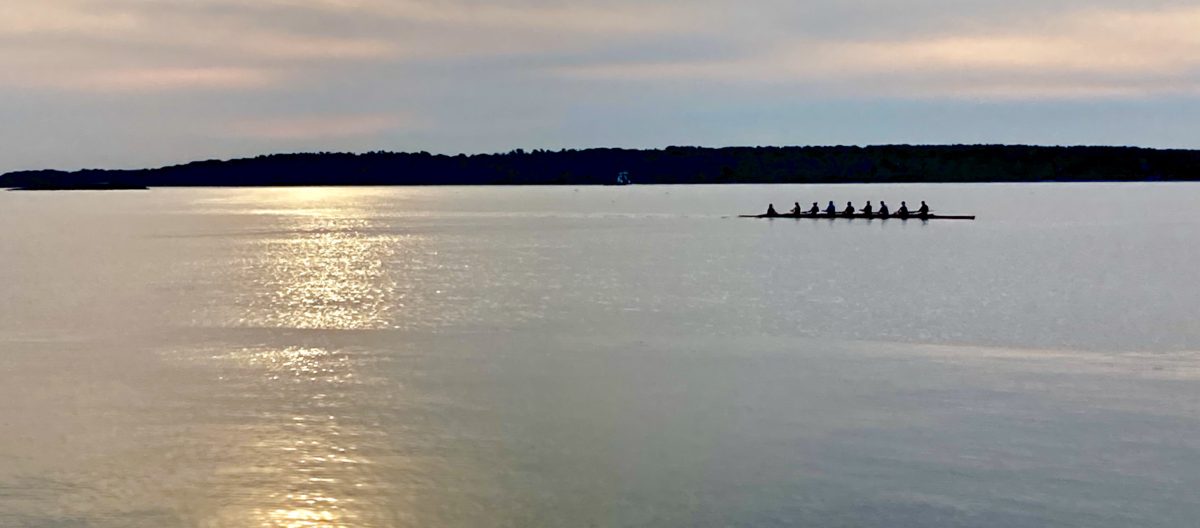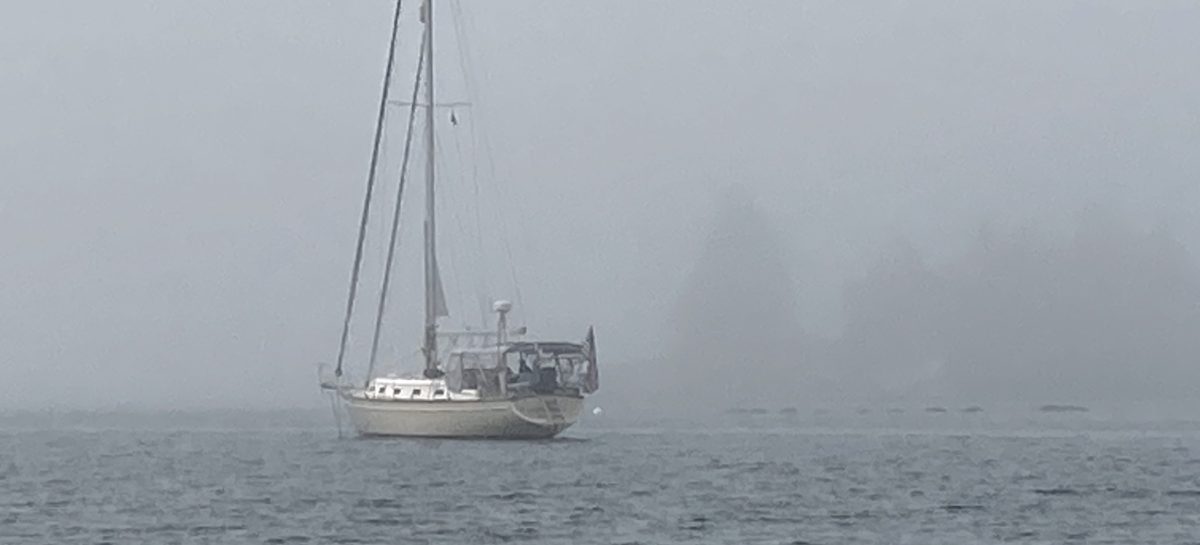Portland is at the west end of Casco Bay. In summers past, it was just a city to get past for us, and we didn’t spend any time there. This summer we spent a total of two or three weeks in the Portland area, and absolutely fell in love with the city.
First, as to anchorages, there aren’t a lot of options for anchorages right close to town.
The city of South Portland has a free dock they offer for overnights, and this is where Dave, Gene and I tied up when we made landfall after our journey north from Norfolk in June. The dock is at Thomas Knight Park, under the south end of the Casco Bay Bridge. From the dock, it’s a mile walk to laundry and supermarket, so it’s a good place to stop for a day or two. But it’s pretty loud and not the most scenic of spots. Additionally, there always appear to be a few local boats who have decided to take up residence on the dock, making access questionable. You can walk across the bridge to Portland, and Dave actually ended up walking all the way to the Portland airport from here when his Uber ride didn’t show up.
Another option is an anchorage called Simonton Cove, which is on your port side as you sail north into the harbor. We stayed a night there, and if you found a great spot with good holding you could spend extended time there. It looked like beach there, but I have no idea if any of it is public.
This is a problem in Portland—finding public landing areas for your dinghy.
Old Portland was built on a peninsula that extends to the NE. At the far NE end of this peninsula is a hillside sloping down to the bay. This hillside is called the Eastern Promenade (or Eastern Prom). Mostly north from the Eastern Prom, and easily visible from there, is an anchorage that the charts have labeled simply as “anchorage”. We wandered around a bit there, and depths seemed consistent and friendly, though there are several warnings about shoaling in the area. We dropped the hook there twice, and both times the holding was excellent—once through a 35+ knot storm overnight that had the added bonus of large seas rolling in from the S/SE—the one direction with very limited protection.
From that unnamed anchorage, we would dinghy over to the East End Boat Ramp, which is at the base of the Eastern Prom. It wasn’t allowable to tie up to the dock, so we beached the boat in the mud each time. It’s messy, but there were water faucets to clean off muddy feet close by. It’s also possible to dinghy to Maine Yacht Center marina, which is west of the anchorage. However, they don’t really encourage visiting dinghies, and will charge $25/day for access. They run and outstanding marina though, and we did stay there for about three days over the summer.
The town of Portland is a walker’s dream town. We walked up and down, back and forth, across the entire downtown peninsula several times. Old Port is quite touristy, but great fun nonetheless. Our real love of the town, was along the many streets over the top of the hill, and along the Eastern Prom. Over on the north side of Back Cove, and along the biking/hiking trail that runs the perimeter of the peninsula. All through Munjoy Hill, West Bayside, and the West End.
Most of the time, when we spend a lot of walking time in a town, we end up in neighborhoods that feel a little iffy and dangerous to us. It’s just part of the deal when you explore new towns by foot, especially the towns we’re exploring, which are always old port cities and towns that have been around for centuries. But in Portland, I never really ran across a neighborhood like that. I’m sure they must exist, but I just never ended up there.
Portland is a foodie town. I’m by no means a foodie, but I can say that I enjoyed the food a great deal in Portland. It was the summer and vaccination rates were high in Maine. We felt relatively safe from Covid, as the new variants hadn’t yet moved us back into the danger zone. And overall, Maine is an extremely safe environment. From the beginning of the pandemic, they’ve been responsible and safe across the board. So we took the plunge and ate out several times. My most memorable meal, though, came from a truck.
At the Eastern Prom, along the street called Eastern Promenade, food trucks set up on most days. Some days are busier than others, with more or fewer trucks depending on the day. I found the food from these trucks to be consistently outstanding, and I understand that some famous chefs actually got their start here selling food from a truck. I can confidently say that the absolutely best fish and chips I’ve ever had came from one of those trucks. I sat on a park bench overlooking the ocean, happy people walking by, enjoying a delicacy that I was sure would rarely—if ever—be matched.
It’ll be hard to keep me from Portland on future trips to Maine. Even if it’s only for a day to stroll the Eastern Prom in search of the fish and chips food truck…

